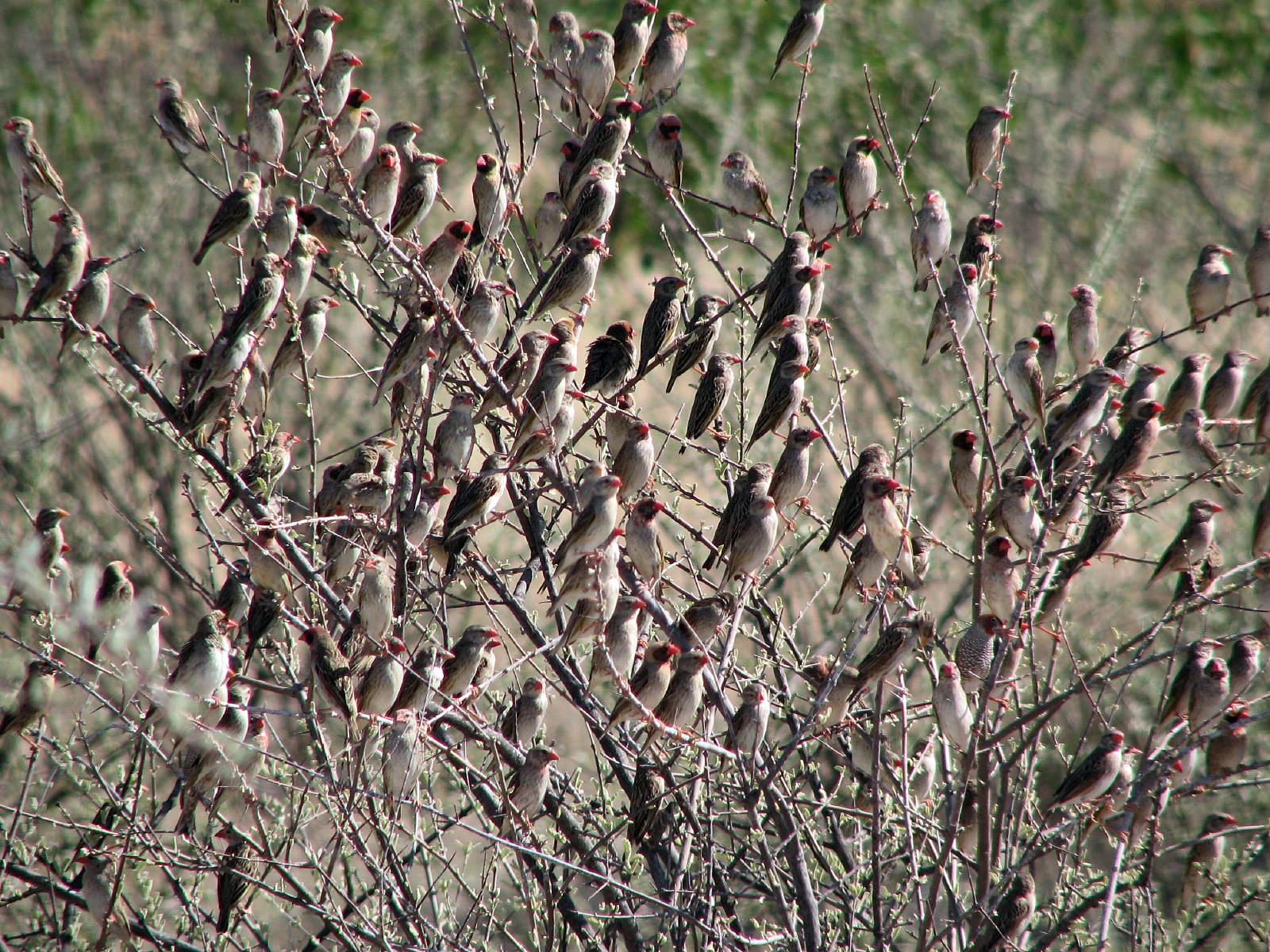|
Quelea
''Quelea'' is a genus of small passerine birds that belongs to the weaver family Ploceidae, confined to Africa. These are small-sized, sparrow- or finch-like gregarious birds, with bills adapted to eating seeds. Queleas may be nomadic over vast ranges; the red-billed quelea is said to be the most numerous bird species in the world. Taxonomy There are three species: Phylogeny Based on recent DNA-analysis, the red-billed quelea is sister to a clade that consist of both remaining species of the genus ''Quelea'', namely ''Q. cardinalis'' and ''Q. erythrops''. The genus belongs to the group of true weavers (subfamily Ploceinae), and is most related to '' Foudia'', a genus of six or seven species that occur on the islands of the western Indian Ocean. This clade is sister to the Asian species of the genus ''Ploceus ''Ploceus'' is a genus (biology), genus of birds in the Ploceidae, weaver family (biology), family, Ploceidae. They are native to the Indomalayan realm, I ... [...More Info...] [...Related Items...] OR: [Wikipedia] [Google] [Baidu] |
Red-billed Quelea
The red-billed quelea (; ''Quelea quelea''), also known as the red-billed weaver or red-billed dioch, is a small—approximately long and weighing —migratory, sparrow-like bird of the weaver family, Ploceidae, native to Sub-Saharan Africa. It was named by Carl Linnaeus, Linnaeus in 1758, who considered it a Emberiza, bunting, but Ludwig Reichenbach assigned it in 1850 to the new genus ''Quelea''. Three subspecies are recognised, with ''Quelea quelea quelea'' occurring roughly from Senegal to Chad, ''Q. q. aethiopica'' from Sudan to Somalia and Tanzania, and ''Q. q. lathamii'' from Gabon to Mozambique and South Africa. Non-breeding birds have light underparts, striped brown upper parts, yellow-edged flight feathers and a reddish bill. Breeding females attain a yellowish bill. Breeding males have a black (or rarely white) facial mask, surrounded by a purplish, pinkish, rusty or yellowish wash on the head and breast. The species avoids forests, deserts and co ... [...More Info...] [...Related Items...] OR: [Wikipedia] [Google] [Baidu] |
